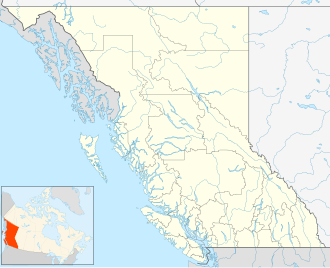| Homathko Provincial Park | |
|---|---|
 A view of the Homathko River Estuary on Waddington Harbour | |
 Interactive map of Homathko Provincial Park | |
| Location | Range 1 Coast Land District, British Columbia, Canada |
| Nearest city | Campbell River, BC |
| Coordinates | 50°56′04″N124°50′40″W / 50.93444°N 124.84444°W |
| Area | 450 ha. (4.5 km2) |
| Established | July 23, 1997 |
| Governing body | BC Parks |
Homathko Estuary Provincial Park is a provincial park in British Columbia, Canada, located at the head of Bute Inlet surrounding the mouth of the Homathko River in the Pacific Ranges of the Coast Mountains.
